BeoGram 3000 (1967)
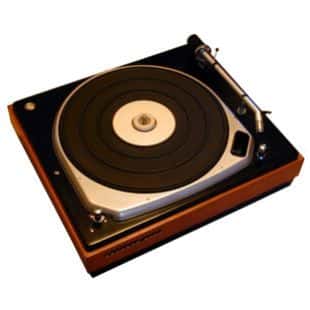
Very rare deck produced for the Dutch and UK market in place of the Thorens based Beogram 3000 and also designed to partner the Beolab 5000 range, this deck was actually made by Acoustical of Holland.

Very rare deck produced for the Dutch and UK market in place of the Thorens based Beogram 3000 and also designed to partner the Beolab 5000 range, this deck was actually made by Acoustical of Holland.
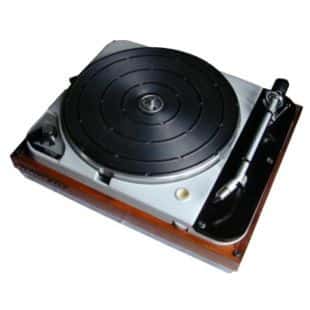
In 1967, B&O found themselves with a world leading Hi-Fi system in the Beolab 5000 but no suitable source for the reproduction of LPs. In a move now commonplace, they simply outsourced and used the motor unit of the Thorens TD124 Mk II – probably the best available to them at this time. They added their own ST/L arm and re-christened it the Beogram 3000.
This deck was sold in those areas allowed by Thorens which initially did not include the UK. A different model was supplied there.Highly sought after by collectors now despite really having little to do with B&O! Some even dispensed with the B&O arm and use an SME tone-arm.
These days the Beogram 3000 Thorens is a sought after model, offering probably the best performance of any Beogram. Because it is basically a Thorens deck, parts are readily available in re manufactured form.
The standard arm was the ST/L but a few were fitted with the rare ST/P arm. This was a 12″ arm but used the earlier SP2 cartridge rather than the SP8 which was fitted to the ST/L when used in the Beogram 3000.
The lid fitted was a lift off device and was high to clear the lift mechanism of the arm.
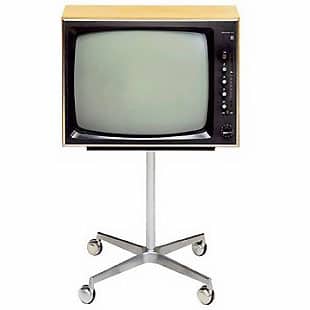
Beovision 700 won the iF Design Award in 1966
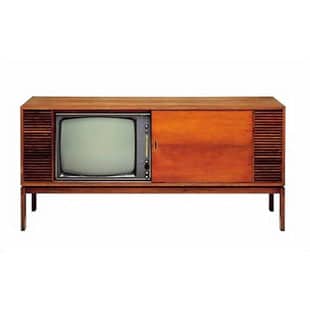
In 1965 came true combination of craftsmanship and advanced technology: Beovision 2000RG was a combined TV and radiogram. It had a sliding door to cover the monochrome TV screen when it was not being use and had stereo speakers mounted either side.
The optional tape recorder was available in two versions – Mono and Stereo.
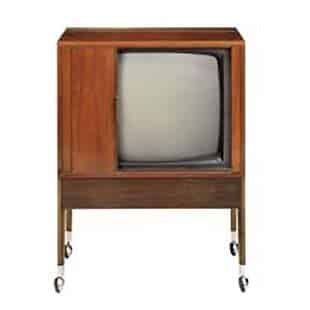
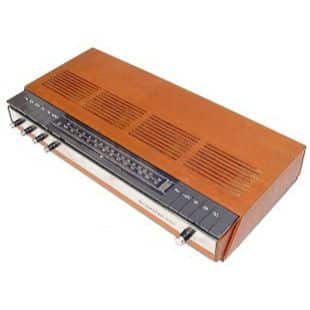
Beomaster 1000 – a compact all-transistor hi-fi 2 x 15 watt stereo amplifier equipped with a highly selective FL radio with extended FM band (to 108 MHz), 3-gang tuning capacitor and 4-stage intermediate-frequency amplifier, automatic control circuit which locks on FM stations and keeps them accurately tuned.
It is prepared for single-transmitter stereo broadcasts, having a B&O multiplex adaptor (stereo decoder); it is also equipped with a pilot lamp (“Beo-Beacon”) which lights up when the receiver is tuned to a station transmitting an FM stereo programme.
The stereo amplifier, which plays both stereo and mono gramophone records, delivers no less than 2 x 15 watts of power output; piano-key speaker change-over switches which control two sets of stereo speaker systems, separate extra-efficient bass and treble controls; balance control for correct stereo sound distribution; physiologically compensated volume control (provides full balance at all volume levels throughout the tonal range); separate scratch and rumble filters; piano-key switching between mono and stereo reproduction; piano-key selectors for switching between the following types of operation: FM Broadcasting, FM Automatic Frequency Control; Tape Recorder; Gramophone 1; Gramophone 2.
Dimensions: 87mm high, 505mm wide, 24mm deep.
Choice of teak or Brazilian rosewood finish. Awarded the 1966 iF Prize for Industrial Design”
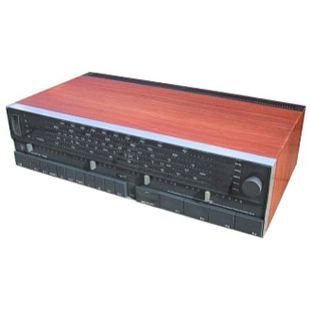
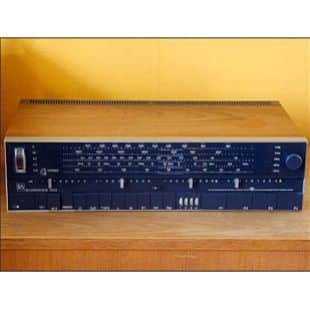
“A splendid example of engineering and up-to-the-minute design, this all-transistor high-fidelity mains radio was developed by B&O for the ever-increasing number of listeners who want a radio which “has everything”
Its excellent FM section has five push-buttons. One is the usual FM bandswitch button; each of the other four can be individually tuned and locked to any station in the FM band, permitting you to tune in your favourite programmes at the touch of a button.
The Beomaster 1400K meets the wishes of the many listeners who insist on superb tonal quality and interference-free low-noise reception of stations outside the FM band. The razor-sharp selectivity of the Beomaster 1400K is a product of its numerous intermediate-frequency circuits. A further feature is a built-in short-wave expander for the SWII band, permitting you to ‘spread’ stations for maximum ease of tuning. There is a built-in decoder for reception of stereo broadcasts.
The amplifier of the Beomaster 1400K has very low distortion (less than 1%) at all frequencies and at all power output levels up to 2 x 15 watts. Its volume control circuit is physiologically compensated in the bass and treble ranges at low volume levels. A highly efficient balance control permits complete suppression of either channel at will.
The Beomaster 1400K has two built-in pressure chamber speakers and jacks for two pairs of external speakers, switchable from the front panel. The gramophone input circuit incorporates a pre-amplifier which is easily replaceable to permit use of stereo record players both with and without pre-amplifiers. A tape recorder jack is also provided. Despite the vast amount of circuitry, cabinet dimensions are relatively small.
Dimensions: 112mm high, 744mm wide, 252mm deep. Choice of teak or Brazilian rosewood finish.
The set is identical with the Beomaster 1400K and has no built-in speakers.
Dimensions: 12mm high, 414 wide, 252mm deep. Choice of teak or Brazilian rosewood finish.”
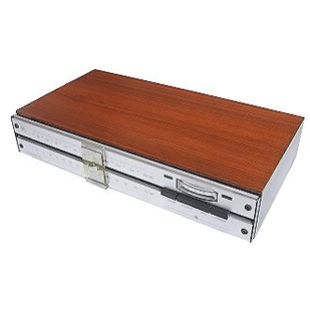
Highly selective and sensitive FM stereo tuner with low-distortion multiplex adaptor featuring a high degree of channel separation. It has a 4-section gang-tuned radio-frequency amplifier with separate oscillator, five-stage intermediate-frequency amplifier, automatic frequency control, and automatic stereo/mono switching.
Large tuning meter facilitates pin-point tuning and provides relative signal-strength indication. An automatic data-processing centre switches from mono to stereo when the signal-to-noise ratio permits stereo reception (and if the set is tuned to a stereo broadcast). Moreover, it automatically cuts out the signal if the field strength drops below the critical level – and between channels, during tuning. The automatic frequency control circuit also ensures that the set stays accurately tuned at all times. The remarkable sensitivity of the Beomaster 5000 is due to the use of multi-stage radio-frequency and intermediate-frequency amplifiers, and the large number of intermediate-frequency circuits provide knife-edge selectivity. An amply-dimensioned true slide-rule dial with station markers ensures easy and rapid tuning.” – taken from the 1967 – 1968 Bang & Olufsen product catalogue
Bang & Olufsen’s Beomaster 5000 FM tuner, Beolab 5000 amplifier and Beovox 2500 Cube loudspeakers were among the first product series designed by Jacob Jensen in 1967. The first was Beomaster 1000 in 1964.
The traditional style for tuning knobs was replaced by an exact measuring instrument akin to the slide rule which was considered an innovation in changing the future of radios and amplifiers. The interface, in its precision and simplicity, proved to give the user optimal functionality. This solution had never been seen before and laid the foundation for the future form language of B&O. Beomaster 5000 was an FM tuner, with elimination of static between stations and a built in ‘data base’ which automatically tuned in on stereo broadcasts.
Partner to Beomaster 5000 was Beolab 5000, an amplifier with a similarly-designed slide rule interface.
At the 1967 spring fair in Hanover, B&O received the IF award for Beomaster 5000, BeoLab 5000 and Beovox 2500 Cube for outstanding and user-friendly design.
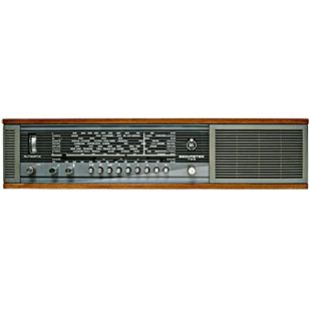
This was a version of the Beomaster 900 with a single speaker attached to it. Rarely seen in the UK.